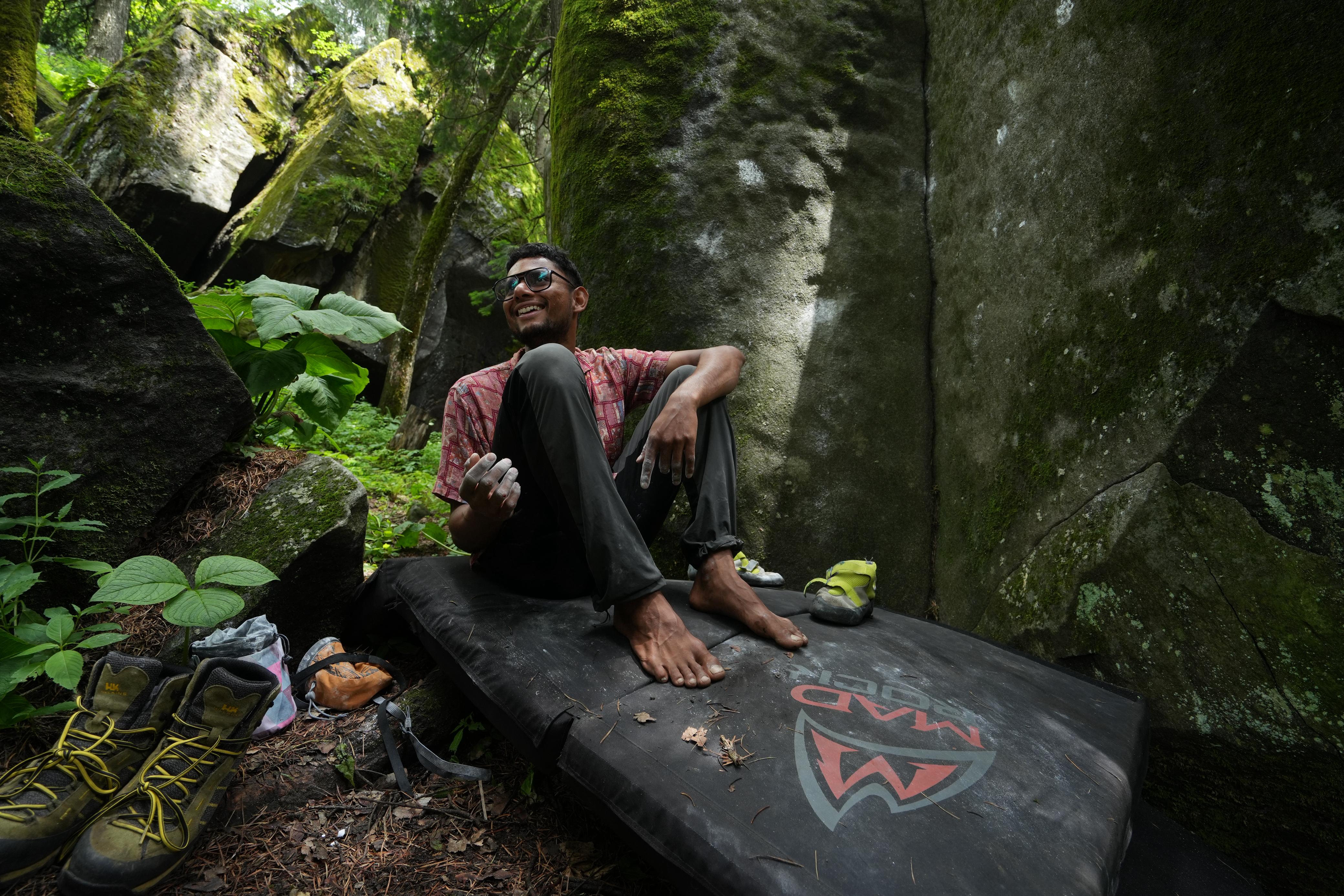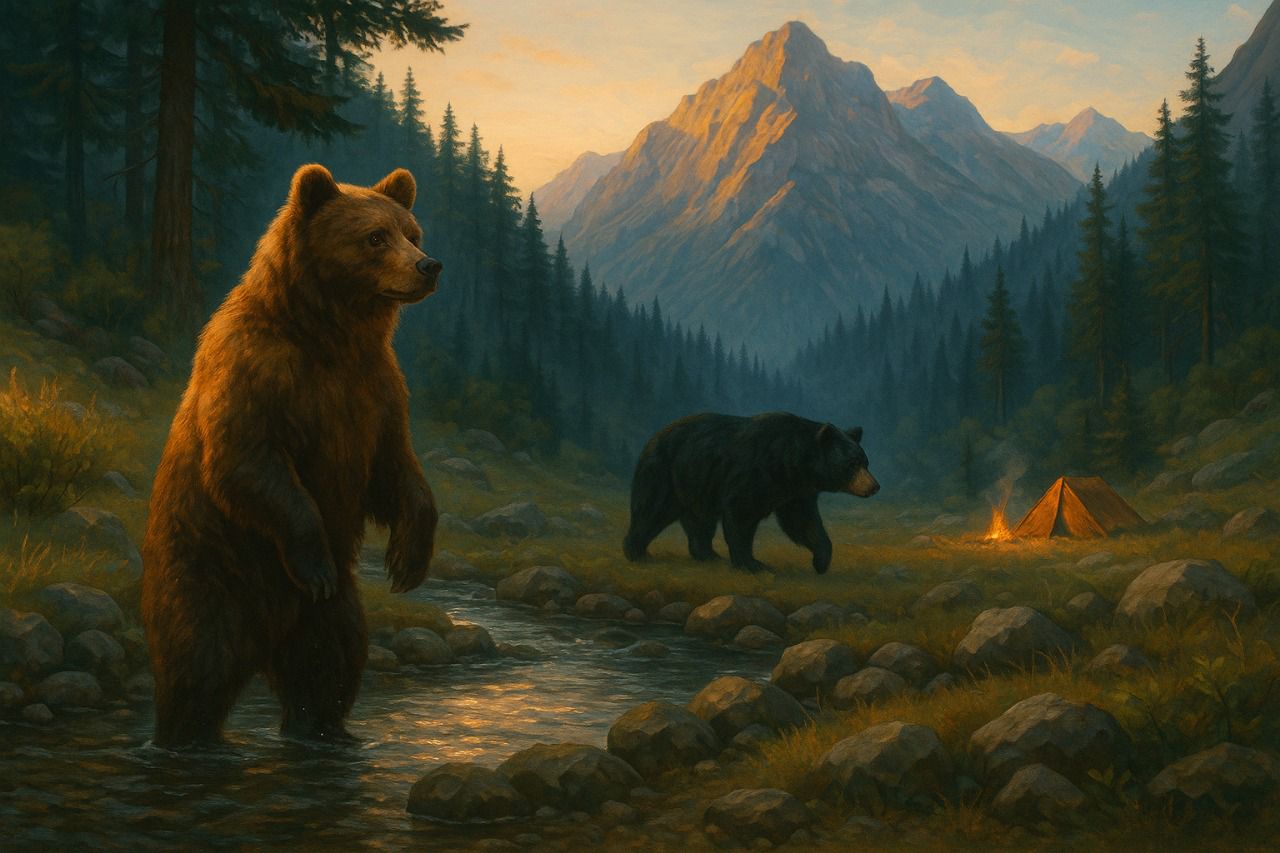A few weeks ago, I was in Sethan, a tiny village in Himachal known for rock climbing, winter sports, base for trekking, and quiet pine forests. One morning, a few of us decided to head out for some sport climbing near Jobri Dam, the start point of the popular Hampta Pass trek.
As we approached the crag, I spotted something interesting from afar — a lone tent pitched well away from the trail, and a woman washing her utensils near the river, a good 100 meters away from her camp. She looked calm, like she belonged there.
Later, while we were roping in for a route, she walked over and greeted us with the kind of warmth only climbers exchange — the “Hey, you’re one of us” kind. Turns out, her name was Natasha, a climber who’d been living out here for a few days. She was helping a friend bolt a new route and had spent part of the morning cleaning holds and brushing off wild grass from crack lines.
We spoke a bit about climbing techniques, her way of projecting routes, and how she manages solo trips. The conversation drifted, and I casually asked:
“Aren’t you scared camping here alone? So far from the village, in the middle of a forest?”
She gave the most nonchalant shrug, as if I had asked if she liked coriander in her dal.
“Not really.”
Then I asked her about bears. I’d seen a few in Sethan before — one of them dragging a carcass at night, casually like it was moving furniture.
She nodded:
“They’re around. But if you know what you’re doing, you’re mostly okay.”
That’s when she gave me a quick field lesson in bear safety, the kind that stays with you long after the mountains.
Bear Safety, Natasha Style 🐾
Here’s what she shared (and I cross-checked with REI and wildlife safety experts too):
1. If You Spot a Bear From a Distance (and the bear sees you too)
Stay calm. Don’t panic. Don’t scream.
“Raise your hands slowly, make yourself look bigger. In your mind, tell the bear:
‘Hey, I’m just minding my own business. But just so you know… I’m the stronger one here.’”
Silence, confidence, and holding ground — that’s the key.
2. If the Bear Seems Threatened (Especially a Mother with Cubs)
This is when it can get tricky.
“If it charges, shout. Go wild. Make noise. Be the crazy animal. Just don’t run.”
Running triggers a chase.
Instead, clap, scream, wave your arms, stomp — but stand your ground.
3. If You’re Camping alone in Bear Country
This is where most of us mess up.
Here’s what she does (and what we should all do):
-Cook food away from your tent (minimum 100 ft if possible)
-Never store food inside your tent, use a dry sack and hang it on a tree or use a bear canister if you’re in known bear zones
-Wash utensils far away from your camp after eating
-Play music softly — natural human noise can keep animals away
-Set up camp fire, it's okay.
-Avoid strong food smells like meat, canned tuna, or spicy leftovers
Brown Bear vs. Black Bear — Which One’s in the Himalayas?
Mostly Himalayan Brown Bears 🐻 (especially in Ladakh, Uttarakhand, and Himachal high-altitude zones).
They’re larger, more territorial, and can be unpredictable — especially when surprised or if cubs are around.
Final Thoughts: Confidence, Not Complacency
The wild doesn’t owe us safety — but understanding it deeply can make us safer.
Whether you’re a solo backpacker, a climber pushing new routes, or someone just camping with friends — how you act out there matters.
Natasha wasn’t fearless.
She was informed, prepared, and fully present in the wilderness.
If you're someone who romanticizes wild camps, solo hikes, or deep jungle climbs — take this to heart:
Prepare like a pro, respect wildlife, and own your presence out there.
Just like Natasha did.
Watch this Bonus video
 Nithyam Nachappa
Nithyam Nachappa
